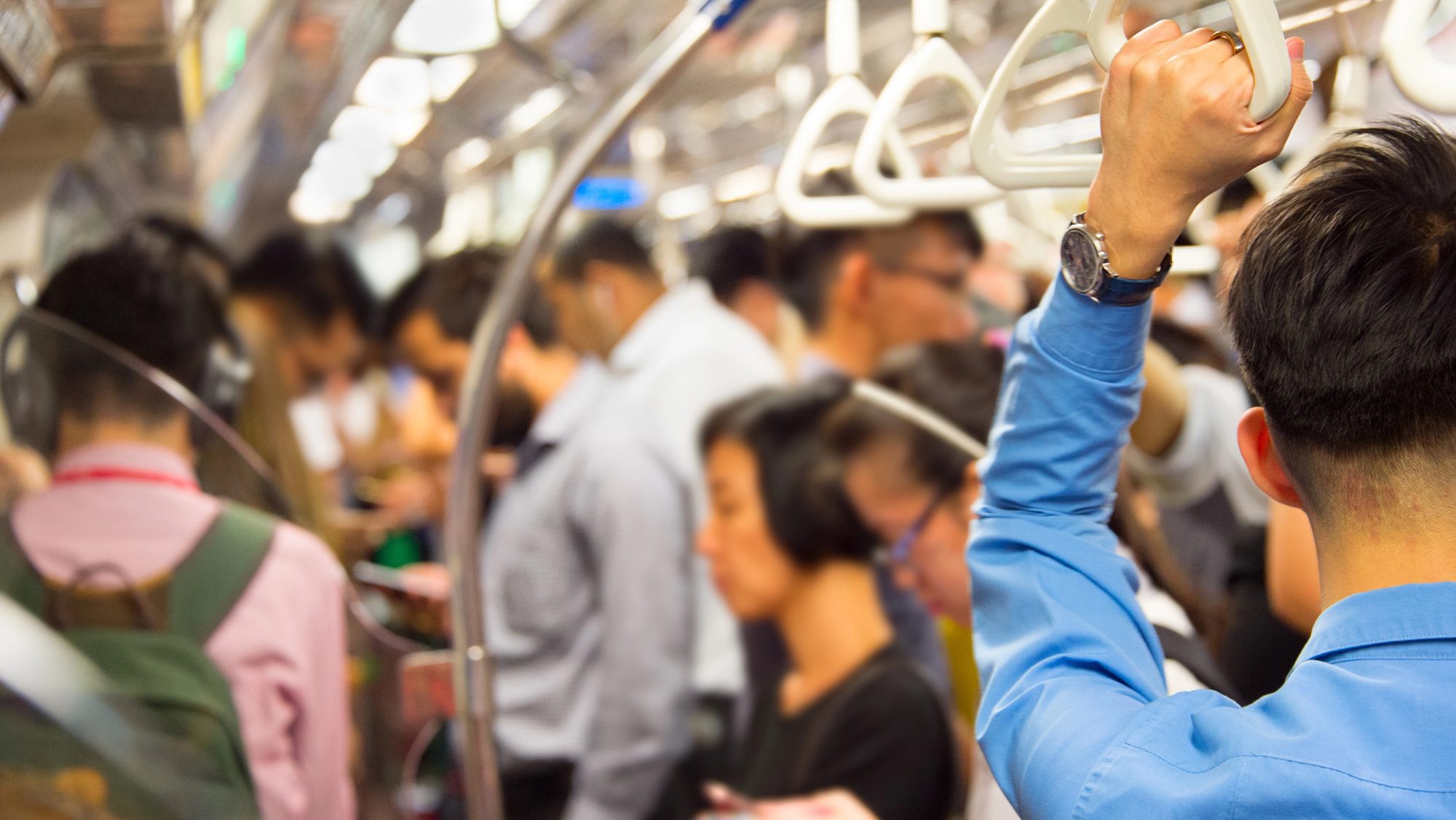SINGAPORE: Singapore’s public transport sector has reached a new milestone as MRT and LRT ridership surpassed pre-pandemic levels for the first time in 2024. However, overall public transport usage—including buses and point-to-point (P2P) transport—remains slightly below 2019 figures.
As The Straits Times (ST) reported, transport experts attribute this trend to the continued expansion of the rail network and lasting changes in commuting patterns due to flexible work arrangements. While MRT trips are expected to continue increasing, Singapore’s broader commuting landscape is evolving in ways that could lead to permanent shifts in travel behaviour.
Surge in MRT and LRT ridership due to rail expansion
According to figures released by the Land Transport Authority (LTA), Singapore’s MRT network recorded an average of 3.41 million daily rides in 2024, a 5.2% increase from 2023, exceeding the 3.38 million daily rides in 2019. Similarly, the LRT network saw an average of 210,000 daily rides in 2024, slightly higher than 208,000 in 2019.
A key driver of this growth is the expansion of Singapore’s rail network. As ST noted, the opening of the Thomson-East Coast Line Stage 4 (TEL4) in June 2024 has significantly improved connectivity for residents on the East Coast, linking them more directly to Marina Bay and Woodlands North. Additionally, the opening of Teck Lee station on the Sengkang-Punggol LRT network in Aug 2024 has enhanced access to the Punggol Digital District.
Dr Samuel Chng, head of the Urban Psychology Lab at the Singapore University of Technology and Design, told ST that the expansion of the MRT network will continue to drive ridership growth in the coming years. “We can expect MRT trips to continue to increase in the coming years,” he said.
The changing dynamics of commuting
Despite the rebound in train ridership, overall public transport usage has yet to return to 2019 levels. In 2024, Singapore recorded an average of 7.46 million daily public transport trips, 3% below the 7.69 million rides recorded in 2019.
A significant factor behind this shift is the widespread adoption of flexible and remote work arrangements. Many commuters no longer travel to the office daily, leading to lower overall ridership despite population growth. Associate Professor Walter Theseira, a Singapore University of Social Sciences transport economist, explained to ST that Singapore’s total population grew from 5.7 million in 2019 to 6.04 million in 2024, yet per capita public transport usage has declined.
“It points to changes to commuting and travel from flexible work, remote work and services, and at least some of those changes is likely permanent,” he said.
Buses remain a key mode of transport
While MRT ridership has surpassed 2019 levels, bus usage has yet to recover fully. The average daily bus ridership in 2024 was 3.84 million, an increase from 3.75 million in 2023 but still below the 4.1 million recorded in 2019.
Professor Raymond Ong from the National University of Singapore noted that while new MRT stations have drawn some commuters away from buses, the bus network remains a crucial component of Singapore’s public transport system.
“Even with more MRT stations being opened, leading some passengers to switch away from buses, we are still seeing bus ridership increase, so don’t discount the bus as a core mode of public transport,” he said, as reported by ST.
LTA announced a $900 million investment over eight years to improve public bus services. This initiative will introduce express feeder buses, expand services in new towns, and implement more peak-hour express routes to complement MRT lines.
Private-hire car usage increases, taxi ridership in decline
Singapore’s P2P transport sector continues to evolve, with private-hire cars becoming increasingly dominant while taxi ridership is declining. This shift reflects changing commuter preferences, with many passengers opting for the convenience and flexibility of ride-hailing services.
Daily private-hire car trips rose to 431,000 in 2024, an 8.6% increase from 2023, surpassing the 419,000 recorded in 2019. Conversely, taxi ridership dropped to 187,000 daily rides, a 10.5% decrease from 2023 and far below the 353,000 rides recorded in 2019.
According to ST, taxi fleet numbers have significantly declined. As of 2024, only 13,117 taxis were in operation, compared to 18,542 in 2019. This decline suggests a shift in driver and passenger preferences towards private-hire services, which offer greater flexibility and efficiency.
Prof Theseira pointed out that taxi operators struggle to compete with private-hire platforms, which rely on app-based matching rather than traditional street hailing. “It will remain challenging to provide a viable street-hail service,” he said, adding that taxi companies must rethink their strategies to attract passengers and drivers.
The future of Singapore public transport
As Singapore enhances its transport infrastructure, MRT ridership is projected to rise, driven by new rail lines and better connectivity. However, the transport landscape is transforming, shaped by flexible work arrangements, shifting commuter habits, and the growing popularity of private-hire cars.
With a growing population and an expanding range of transport options, the key challenge will be adjusting to evolving commuter demands while maintaining an efficient, dependable, and sustainable transport network. Whether through expanding the MRT system, improving bus services, or reshaping the taxi industry, Singapore’s transport ecosystem will continue to evolve in the years ahead.

